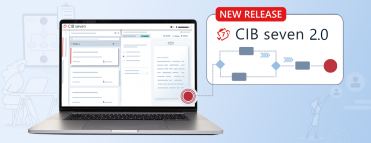Document digitization should not affect reading comfort
The list of examples could go on and on. However, it is already clear that digitized documents do not always offer optimum reading comfort. Fortunately, “Super Resolution” is an image processing method that solves this problem.
Missing image components are added automatically
Super Resolution is a process that automatically analyzes and optimizes the quality of images (such as scanned documents). The goal here is to achieve a higher resolution (size and image sharpness). In simple terms, the basic task of this upscaling process is to insert missing pixels between existing pixels. Several methods exist for this purpose:
- Nearest-neighbor method: copy nearest original pixel.
- Bilinear interpolation: calculate position of new pixels based on neighboring pixels
- Bicubic interpolation: determine value based on a non-linear function
Unfortunately, all these methods have a fundamental weakness: they follow comparatively simple rules and are unable to add new information to an image. A human, however, is clearly ahead of them. Based on the surrounding context, he or she can “think up” sharp lines or closed loops of letters, for example. Artificial intelligence is also capable of acquiring this ability – subject to targeted training.
How does AI-based Super Resolution work?
Super Resolution, or more precisely Image Super Resolution, is based on a machine learning model that independently transforms low-resolution images into high-resolution images. Such models can be trained by gradually reducing the quality of an initially high-resolution image until it only corresponds to that of a very poor scan, for example. The algorithm then learns to reverse this process – in other words, to improve the quality step by step. In the case of texts, this training process must of course be performed with all common fonts. It becomes much more complicated (but also not unrealistic) if handwriting is to be processed as well.
Superresolution: An important component of reliable document digitization
Whether it’s an old document from the archive, a scan with too small a font, or a blurry cell phone photo, CIB superResolution can significantly improve the readability of documents in many complicated scenarios. For the transformation process, the method thus has an important meaning: It ensures the quality and problem-free consumability of the digitized information. Check the performance in our CIB doXiview Showcase.
CIB is conducting research within the scope of several projects to automatically improve document quality using various approaches. “Document Deep Learning Super Resolution” is an important component here. This is because the method helps organizations and companies to make suboptimal scans more readable for humans by intelligently enlarging and sharpening them. But the CIB team is also evaluating approaches such as auto-cropping and auto-rotation (automatically cropping, rotating and de-skewing document pages) as well as fraud detection (detecting forged or manipulated content). The goal is to gradually incorporate the research results into CIB products so that in the future optimal document quality can be realized even in extremely difficult cases. CIB superResolution helps big scala digitalization process being reliable and consistent.






